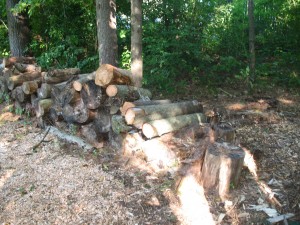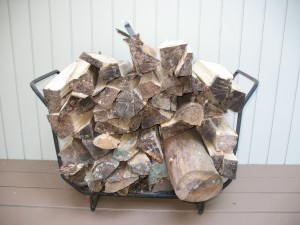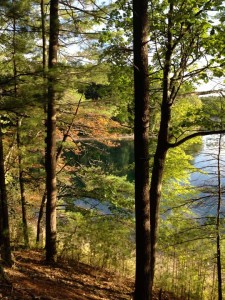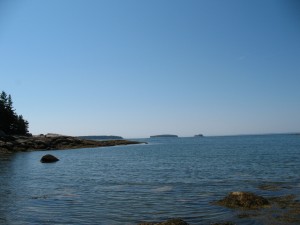A week or so ago, our neighbor had a cord of firewood dropped off in her driveway. I heard the heavy clatter while I was painting a side of our garage, and, after finishing that section, I walked over for a look. Her wood was a mix of ash and maple, cut into stove wood lengths and split. Hefting a few chunks told me that it was mostly dry; she had a lot of warmth piled up there.
I ambled back over to our house and closed my paint can and washed my brush. Then, I pulled out my axe, splitting maul and a few wedges and headed for our small stand of trees in the back. Out there I have a scavenger’s woodpile of rounds from a few local blowdowns in recent years. The birch was going to rot promoted by its tight bark, but the maple was still solid. I sized up a large round, examining its sides for whorls and other disturbances in the grain; then I took a swing, hitting precisely and happily the spot I’d aimed for. The axe stuck fast. As I worked to extract it, its head wobbled, and I thought of Henry’s axe, immersed in water to swell its wood and tighten its hold on the head. I got a bucket of water, set the axe in it and shifted to the splitting maul.
Gradually, as my axe soaked, my woodpile of white-faced quarters grew. I turned then to sections of a small oak that had been crowded out by our little lot’s pines and added its dense pieces to the pile. I spotted more downed wood next door and asked my neighbor about it, dragging it then to sectioning with my bucksaw and eventual splitting.
As the light shifted through my grove, I grew more and more attuned to any potential firewood, sorting what I found into types – chunk wood, quick heat, kindling. A satisfying warmth suffused me, and I thought of Henry Thoreau’s wood-scavenging in the fall of 1855, when he and a companion “brought home quite a boatload of fuel”:
“It would be a triumph to get all my winter’s wood thus,” he wrote on September 24th. “How much better than to buy a cord coarsely from a farmer…Then it only affords me a momentary satisfaction to see the pile tipped up in the yard. Now I derive a separate and peculiar pleasure from every stick that I find. Each has its history, of which I am reminded when I come to burn it…”
Just so in a narrative world where our stories are won by the time we allot to them. Autumn’s first fire draws near.






